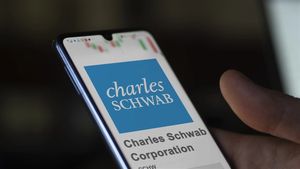
First Fidelity Guarantee a certificate of deposit brokerage firm that is proficient in facilitating the placement of deposits of third parties with FDIC insured depository institutions, is explaining how to roll over a 401(k)
Simplified for the layman, a 401(k) plan is a retirement savings plan offered by many American employers that has tax advantages for the saver. It is named after a section of the U.S. Internal Revenue Code (IRC).
The employee who signs up for a 401(k) agrees to have a percentage of each paycheck paid directly into an investment account. The employer may match part or all of that contribution. The employee gets to choose among a number of investment options, usually mutual funds.
Explaining how to roll over a 401(k), an executive of First Fidelity Guarantee, said: "You need to decide what to do with your 401(k) when quitting a job (k). If you like the investment options provided by the plan, you can choose to leave it there. If your new employer accepts rollovers and you like the investment options in the new plan, you can also choose to roll it over into your IRA (if you want maximum control over your investment options). You have two options and some restrictions if you wish to move money from your 401(k) to the qualifying plan of a new employer or your IRA.''
Direct Rollover
First Fidelity Guarantee explains that to complete a direct rollover, one should ask the trustee of the plan to transfer the funds to an IRA or another qualified retirement plan in order. Typically, one will need to sign documents confirming that you want the transfer to be made by the plan administrator or trustee (the person in charge of the plan). The money might be rolled over in full or in part.
Normally, a mandatory 20% tax withholding is applied to qualified retirement plan distributions, however a direct rollover is exempt from this requirement. The transfer is viewed as a direct rollover and there is no withholding even if the plan sends the individual a check as long as it is made payable to the new plan or IRA.
Special Considerations
It might not be wise to roll over a 401(k) that includes stock in one's employer's company. First Fidelity Guarantee explains that a partial rollover may be preferable. This is why: The gap between the purchase price and the current fair market value of employer securities is known as the net unrealized appreciation (NUA). The potential tax benefit of turning ordinary income into capital gains that are subject to preferential taxation is lost if the stock is rolled over. The final dividend resulting from the employer securities with a rollover will be subject to ordinary income tax.
60-Day Rollover
''You can perform a rollover by transferring funds from a dispersed 401(k) into an IRA or another qualifying retirement plan. If you deposit the money in your (non-IRA) account first, you can write a check on that account payable to the new plan or IRA to complete the rollover. Alternatively, you can endorse the issued check over to the new plan or IRA. After receiving the distribution, you have 60 days to complete the rollover,'' an executive of First Fidelity Guarantee explained.
One primary advantage of a 401(k) rollover is that the individual has control over the funds for the short term and can use them before completing the rollover. For example, if one needs funds for a specific purpose (e.g., paying tax bill for the year), one can use the distribution and not incur any income tax as long as the individual comes up with other funds to complete the rollover within 60 days.
To access the services of First Fidelity Guarantee, check out their website at firstfidelityguarantee.com/
Media Contact
Company Name: First Fidelity Guarantee
Contact Person: FFG Management
Email: Send Email
Phone: 859-372-6632
Country: United States
Website: https://www.firstfidelityguarantee.com/






